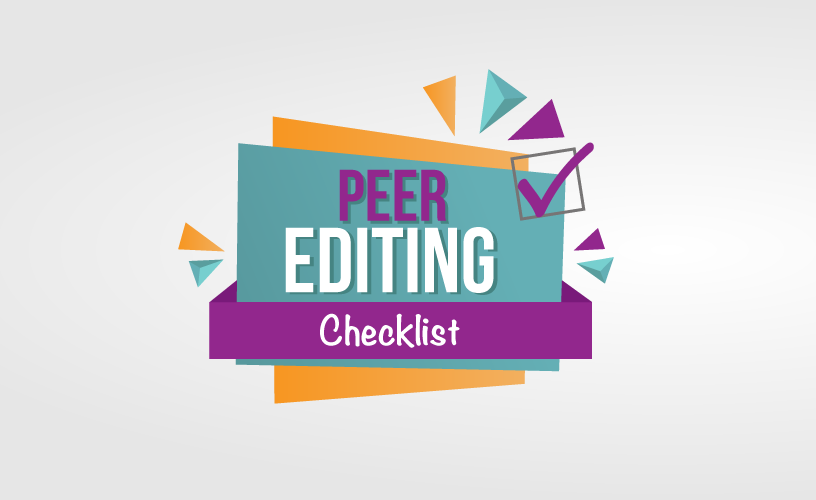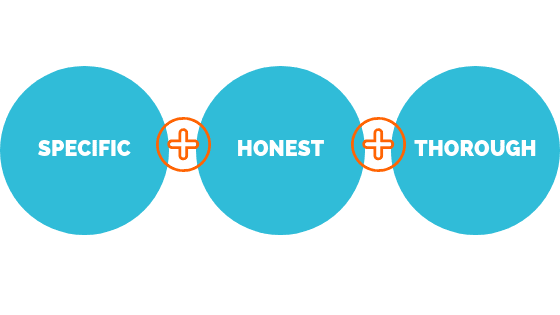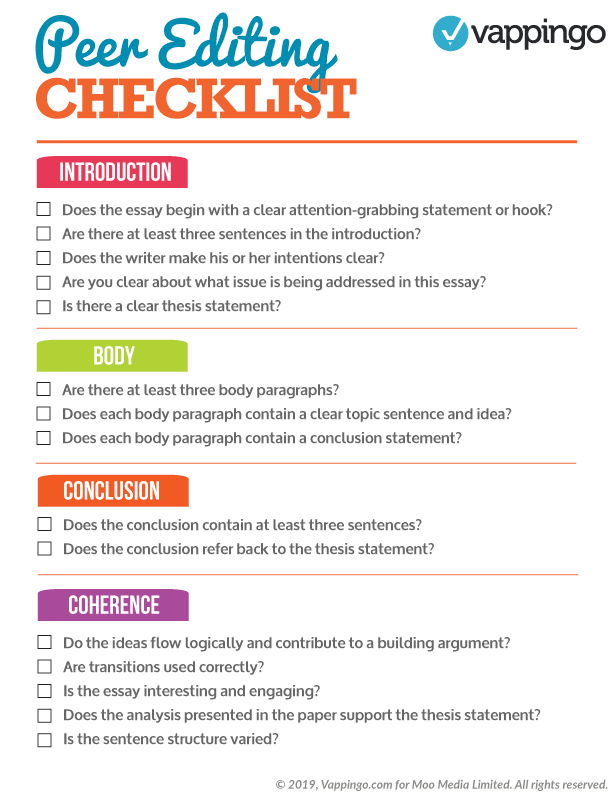If you want to peer edit an essay and are looking for some top tips, check out our free peer editing checklist.
 If you’ve got a looming essay deadline, chances are you’ll be happy to just get the dastardly paper finished on time and proofreading and editing won’t feature on your radar.
If you’ve got a looming essay deadline, chances are you’ll be happy to just get the dastardly paper finished on time and proofreading and editing won’t feature on your radar.
The idea of editing and proofreading your own essays, let alone asking someone else to help, may be beyond comprehension. In fact, you may think your essay is pretty fantastic already.
If so, you’re deceiving yourself.
Don’t just settle for good. You should be looking for great.
But how do you achieve this?
The majority of students settle for good. That’s enough. It will get them through school.
But good isn’t enough for the top students. They aspire to be great. They aspire to be awesome.
How do YOU become awesome?
Get a friend to help.
To take an essay beyond the draft stage through a polished version, you need a peer editor. It doesn’t necessarily have to be a professional essay editor (although that will deliver the best results); it needs to be someone who will call you out and tell you how it really is.
When you’re looking for someone to peer edit your essay, try and choose someone who you know well and who you can trust to be honest and methodical. You’re not looking for someone who’ll tell you how great your essay is; you’re looking for someone who will provide you with an objective criticism of your paper.
The purpose of the exercise isn’t to tear you down; it’s to make you better.
So, once you’ve found the ideal peer editor, how can you get the most out of the exercise?
Hand them our handy tips and the great peer editing checklist.
If you wish to edit your essay before engaging the help of a peer editor, take a look at our guide to essay editing.
How to Peer Edit an Essay: Top Tips for Success
Peer editors should review an essay with the primary intention of offering advice on how it can be improved. Here are some great tips to make sure you do the task justice.
Ideally, read through the paper at least twice
During the first pass, you’ll familiarize yourself with the content of the essay and the primary arguments that are put forth. During the second pass, you’ll have a chance to readily understand what is being said. If you don’t understand the content after two readings; there’s a problem the writer needs to know about.
Position yourself as the target reader
While you’re in the process of peer editing the essay, take the role of the envisioned reader; i.e., the person who is reading the essay to learn from someone as opposed to being on the hunt for pesky grammatical errors. During the peer editing process, you should be concerned with content, organization, and style. If you focus purely on punctuation and spelling errors, you may not add a significant amount of value. Your role is to help the writer ensure the essay is clear and compelling.
Resist the temptation to fix the issues
Your job as a peer editor is not to take over and correct any issues that you identify; it’s to provide the writer with constructive feedback on how the paper can be improved.
Tell the truth… constructively
If you’re peer editing a friend’s essay, you may not want to hurt his or her feelings by pointing out areas where there is a lack of clarity. However, if you fail to do so, there’s no point in engaging in the process. Resist the urge to say everything is fine and instead focus on how you can help the writer learn someone from the process. Provide constructive feedback that highlights the positive areas of the essay while also pointing out some areas for improvement.
Provide specific details
Don’t provide sweeping statements such as, “I don’t understand your point.” Instead, provide very precise feedback on what exactly you don’t understand and what information may help you understand it better: “Perhaps you could make your point clearer by explaining why…” Take every opportunity to explain why you found something effective or ineffective.
Check the style guide
Universities and colleges typically follow one of six major style guides in academic writing: APA, Harvard, MHRA, MLA, OSCOLA and Oxford. When you write in a consistent manner following a recognised style guide, it is simpler for readers to understand what to anticipate and where to find further information. Effective application of a style in formal writing will distinguish your work visually and ensure you meet the university’s requirements. If you’re using APA, take a look at our guide to APA formatting.
The Three Pillars of Excellent Peer Essay Editing
 Free Peer Editing Checklist
Free Peer Editing Checklist
Download a free PDF version of our peer editing checklist by clicking on the image above. Here’s the full lowdown on what’s included.
Essay Introduction
- Does the essay begin with a clear, attention-grabbing statement or hook?
- Are there at least three sentences in the introduction?
- Does the writer make his or her intentions clear?
- Are you clear about what issue is being addressed in this essay?
- Is there a clear thesis statement?
See our guide to how to write an essay introduction for more help.
Body
- Are there at least three body paragraphs?
- Does each body paragraph contain a clear topic sentence and idea?
- Does each body paragraph contain a conclusion statement that leads well to the next body paragraph?
Conclusion
- Does the conclusion contain at least three sentences?
- Does the conclusion refer back to the thesis statement?
Essay Flow and Coherence
- Do the ideas flow logically through the paper and contribute to a building argument?
- Have you used transitions correctly?
- Is the essay interesting?
- Does the analysis presented in the paper support the thesis statement?
- Is the sentence structure varied?
Essay Style and Mechanics
- Have you appropriately attributed and cited evidence?
- Have you cited each reference source according to the relevant style guide? If you’re using APA, take a look at our APA checklist.
- Is the paper formatted according to the relevant style guide?
- Are the references, tables, and figures formatted according to the relevant style guide?
Grammar
- Have you proofread the paper? For a full proofreading checklist, take a look at our essay proofreading checklist.
Check for:
- Misspelled words
- Grammatical mistakes
- Punctuation errors
- Run-on Sentences
- Fragments
So that’s our guide to how to peer edit an essay. Got anything to add? Please leave a comment.


4 thoughts on “How to Peer Edit an Essay: Free Peer Editing Checklist”
Comments are closed.